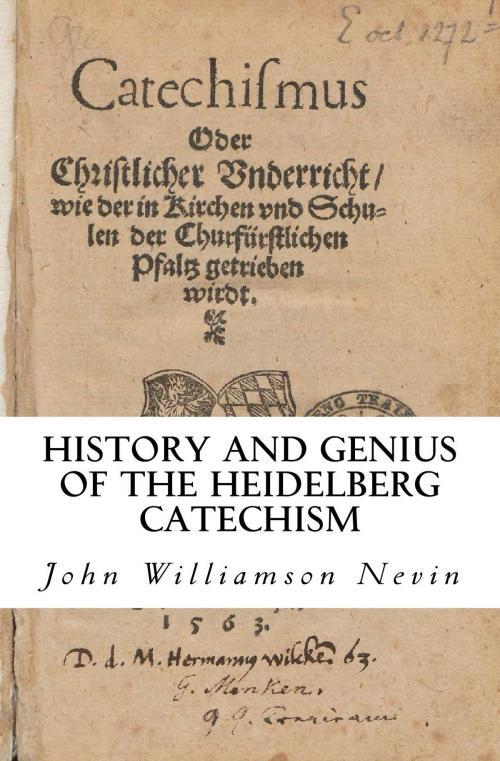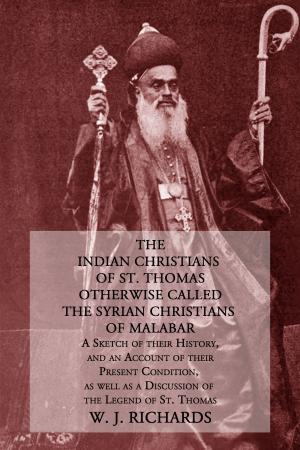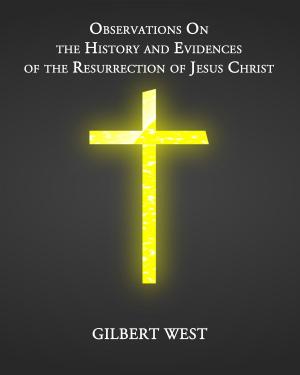History and Genius of the Heidelberg Catechism
Nonfiction, Religion & Spirituality, Christianity, Church, Law, Education, Church History| Author: | John Williamson Nevin | ISBN: | 1230001342734 |
| Publisher: | CrossReach Publications | Publication: | September 11, 2016 |
| Imprint: | Language: | English |
| Author: | John Williamson Nevin |
| ISBN: | 1230001342734 |
| Publisher: | CrossReach Publications |
| Publication: | September 11, 2016 |
| Imprint: | |
| Language: | English |
The HEIDELBERG CATECHISM; first appeared in the year 1563, and soon won for itself a sort of universal authority in the Church, that no similar system has since been able to supplant. Its relation to the Reformed Church was soon allowed to be parallel, in this respect, with that of the venerable Catechism of Luther to the Lutheran Church; a distinction not admitted before, in favor even of the Catechism of Geneva. Hence it is denominated at times the Reformed Catechism, as representing, by general acknowledgment, the faith of the entire communion, distinguished by the same title in the sixteenth century. It is much more indeed than a Catechism, in the ordinary sense; being so constructed as to serve, at the same time, the purpose of a full church Confession. It stands forth accordingly with special prominence, not only among the Catechisms, but among the regular Confessions also, of the period to which it belongs. In this view, it holds, we may say, the very highest distinction. If the question be asked, which among all the symbolical books that have appeared in the Reformed Church, has the best claim to be regarded in the light of an œcumenical or general symbol; the answer must be given undoubtedly, that it is the Heidelberg Catechism.
Such we find to be, in fact, the clear judgment of history itself. Though formed originally for the use of a particular territory only, the Catechism proved to be a true and happy exposition of the faith of the Reformed Church in general; and in a short time accordingly, it came to be recognized and honored as such, all over Europe. Where it was not exalted formally to the rank of a symbolical book, it was at least invested with the highest credit, as a work embodying in the most approved form, the doctrines of the Church at large. The authority of the prince under whose direction it was prepared, was sufficient indeed to bring it into general use in the Church of the Palatinate; but this authority could have no force beyond these limits. Its favorable reception in other lands could be owing only to its own intrinsic worth, and the ready concurrence in its doctrine sand spirit, which it met with from the Reformed Church in every direction. It was received indeed with a sort of universal homage, as an ornament to the creed which it was felt so well to represent. Switzerland, France, Scotland and England, joined in testifying towards it their admiration and respect. It was translated for the use of schools and churches in Hungary. It became the basis of religious instruction, for the Reformed Church generally in Germany. In the Netherlands it was clothed with the highest authority, in being made to constitute, along with the Belgic Confession, the national rule of faith. Finally by the Synod of Dort, the general council of the entire Reformed Church in the beginning of the seventeenth century, it was formally acknowledged and sanctioned, as a fair and proper representation of the Reformed faith in all lands. It became thus in form, to a certain extent, the accredited standard of the Church as a whole.
In all this we see the true importance of the Heidelberg Catechism. The relation which it bears to the whole Reformed Church of the sixteenth century, is full of interest, and such as may well make it an object of special regard in all ages. No other Catechism or Confession comes down to us, under the same broad catholic character, or with equal claims, in the view now mentioned, to historical attention and respect.
The HEIDELBERG CATECHISM; first appeared in the year 1563, and soon won for itself a sort of universal authority in the Church, that no similar system has since been able to supplant. Its relation to the Reformed Church was soon allowed to be parallel, in this respect, with that of the venerable Catechism of Luther to the Lutheran Church; a distinction not admitted before, in favor even of the Catechism of Geneva. Hence it is denominated at times the Reformed Catechism, as representing, by general acknowledgment, the faith of the entire communion, distinguished by the same title in the sixteenth century. It is much more indeed than a Catechism, in the ordinary sense; being so constructed as to serve, at the same time, the purpose of a full church Confession. It stands forth accordingly with special prominence, not only among the Catechisms, but among the regular Confessions also, of the period to which it belongs. In this view, it holds, we may say, the very highest distinction. If the question be asked, which among all the symbolical books that have appeared in the Reformed Church, has the best claim to be regarded in the light of an œcumenical or general symbol; the answer must be given undoubtedly, that it is the Heidelberg Catechism.
Such we find to be, in fact, the clear judgment of history itself. Though formed originally for the use of a particular territory only, the Catechism proved to be a true and happy exposition of the faith of the Reformed Church in general; and in a short time accordingly, it came to be recognized and honored as such, all over Europe. Where it was not exalted formally to the rank of a symbolical book, it was at least invested with the highest credit, as a work embodying in the most approved form, the doctrines of the Church at large. The authority of the prince under whose direction it was prepared, was sufficient indeed to bring it into general use in the Church of the Palatinate; but this authority could have no force beyond these limits. Its favorable reception in other lands could be owing only to its own intrinsic worth, and the ready concurrence in its doctrine sand spirit, which it met with from the Reformed Church in every direction. It was received indeed with a sort of universal homage, as an ornament to the creed which it was felt so well to represent. Switzerland, France, Scotland and England, joined in testifying towards it their admiration and respect. It was translated for the use of schools and churches in Hungary. It became the basis of religious instruction, for the Reformed Church generally in Germany. In the Netherlands it was clothed with the highest authority, in being made to constitute, along with the Belgic Confession, the national rule of faith. Finally by the Synod of Dort, the general council of the entire Reformed Church in the beginning of the seventeenth century, it was formally acknowledged and sanctioned, as a fair and proper representation of the Reformed faith in all lands. It became thus in form, to a certain extent, the accredited standard of the Church as a whole.
In all this we see the true importance of the Heidelberg Catechism. The relation which it bears to the whole Reformed Church of the sixteenth century, is full of interest, and such as may well make it an object of special regard in all ages. No other Catechism or Confession comes down to us, under the same broad catholic character, or with equal claims, in the view now mentioned, to historical attention and respect.















